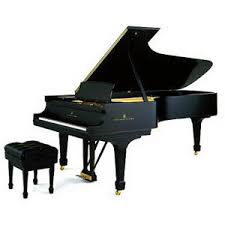MaestroDJS wrote:
However the LP technology had been available at least a decade earlier, during the 78-RPM era. Unfortunately the depression-era economy of the 1930s would not support a switchover to the LP medium, because then consumers would need to throw out their 78-RPM record players and buy LP record players. At the time, a maximum duration of 4 or 5 minutes per 78-RPM side was considered adequate for popular music, which had the greatest sales anyway. Nonetheless, many radio broadcasters used 12-inch or 16-inch 33 1/3 RPM or 16 2/3 RPM discs to record their broadcasts for archival purposes. It was not until the post-World-War-II prosperity of the late 1940s that conditions were right for the LP to assume its place in mainstream recorded music.
While RCA introduced its LP in the depths ofthe Great Depression (1931), another factor that influenced its success was the state of playback equipment at that time. The Early RCA LPs were pressed on a vinyl like material that couldn't stand up to the tracking force by heavy tone arms. Prior to the RCA long-playing record, Edison had introduced one that could play forty minutes a side at 80 RPM. Edison's disc was microgroove (although it wasn't called that) and traced undulations in the bottom of the groove rather that the sideways motions of the discs we know today.
Columbia may have been inspired by those early LPs, although I suspect it was the extensive broadcast experience of CBS that led the recording division to use long-playing discs as recording masters in 1938 or so. Consequently most American Columbia 78 RPM albums issued after this time are dubbed from these masters and generally sound terrible when compared to later LP issues. Beecham went as far as suing CBS to prevent the release of some recordings because they sounded so bad as dubbings (the Masterworks Heritage CDs let us hear how good they really sounded).
Another factor that helped the early LP to succeed was the introduction of magnetic tape as a recording medium.
When seeing that Columbia had the foresight to see the emergence of the LP, it is surprising that RCA wasn't able to connect the dots, at least as far as using the long-playing medium as recording masters. Their decision may have been influenced by the state of dubbing technology at the time.
MaestroDJS wrote:
Columbia Records was so eager that their new LP system become the market standard for recorded music that they did not patent the technology. In fact, Columbia executives including William Paley demonstrated their new LP technology to RCA executives including Robert Sarnoff, in the hopes that RCA would join forces with them. Instead, RCA decided to develop its own technology in the hopes that they could upstage Columbia. This resulted in the 45-RPM record. Apparently this speed was also a simple calculation, out of spite to Columbia: 78 RPM - 33 RPM (rounded down to an integer) = 45 RPM.
I believe they did patent the technology but issued licenses royalty-free to use it.
45 RPM was the speed used by Keller in his early stereophonic recording experiments for Bell Labs in the early 1930s conducted at Philadelphia's Academy of Music. I believe he thought this the ideal recording speed. If RCA had introduced 12" 45 RPM discs, the battle with Columbia might have been interesting. If you have any of the Angel 45 RPM discs from the late 1970s, the sonic improvement over their conventional counterparts is palpable.
John




